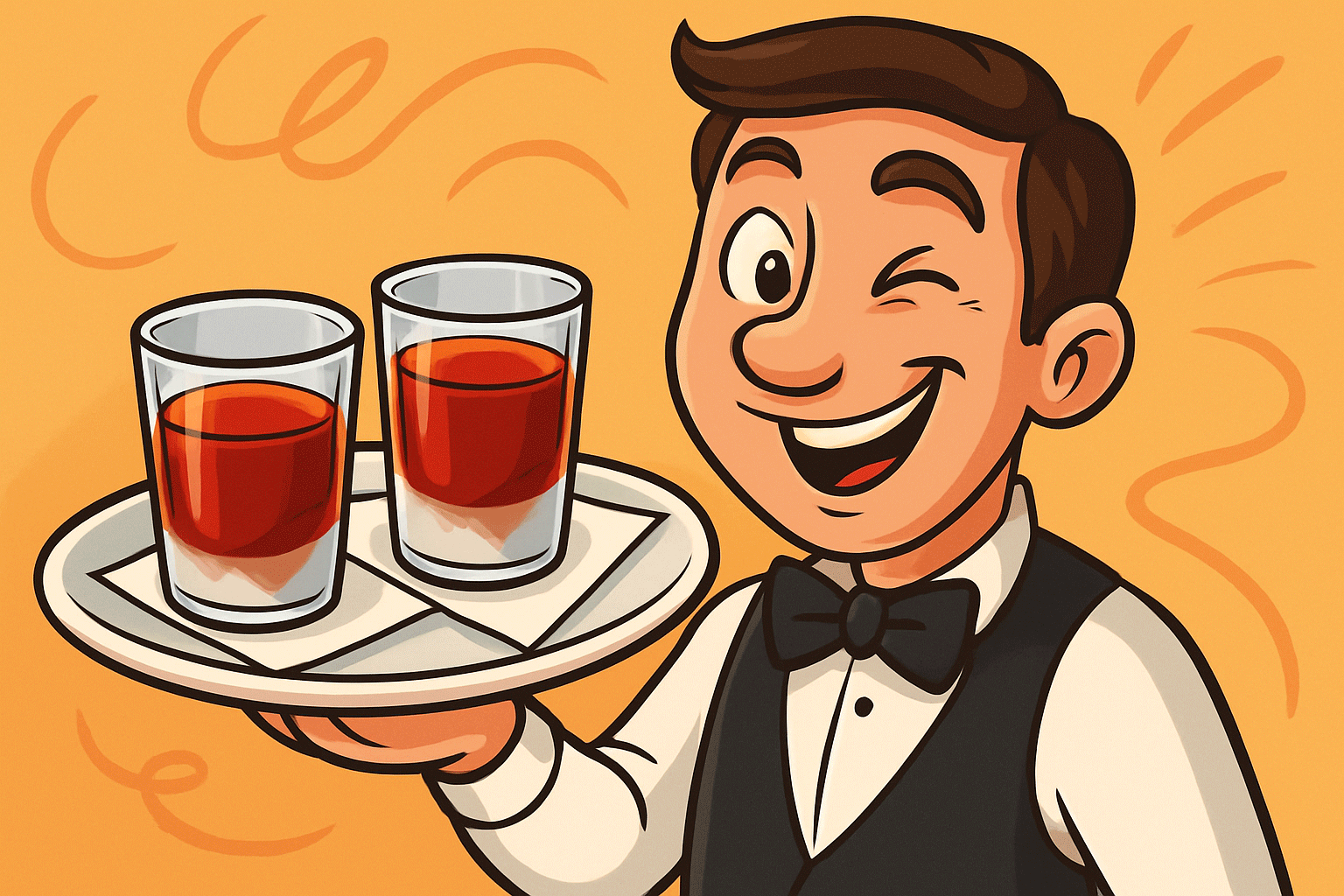We were in a quiet town in Andalusia, Spain. It was a sunny weekend morning — the perfect time for a coffee… or so we thought.
We stepped into a small local bar, the kind with plastic chairs, no menu in sight, and regulars who’ve been ordering the same thing since 1982.
Inside, all the men were chatting loudly, like they were trying to out-volume each other. As I sat there observing the incomers who greeted the already present with loud, cheerful greetings, I realised there were no women. These men had a coffee in one hand — and something else in the other:
Tiny glasses filled with either a mysterious pink liquid or a clear drink.
Naturally, we stared long enough to look suspiciously foreign. Typical giris.
When in Doubt, Whisper to the Waiter
Years ago, I might’ve just awkwardly pointed or given up entirely. But now, and after owning the language (and making every possible mistake along the way), I’m not shy anymore.
I leaned in toward the waiter and asked, in my best I-belong-here voice:
“Perdona… ¿qué es eso que están tomando?”
He didn’t hesitate. He leaned in, too, lowered his voice like he was letting me in on a local secret:
“Pacharán o anís,” he said with a wink.
And just like that, without another word, he brought us two tiny frozen glasses.
“Pruébalo,” he whispered.
The Language of Liquor (and Confidence)
It was 10 a.m.
The drink was sweet, strong, and confusing — kind of like drinking herbal perfume if your perfume was also trying to set your throat on fire.
It may have been homemade. It was definitely not coffee.
But it was perfect.
Not because of the taste, but because of what it meant:
I felt 10% more local. I wasn’t just an onlooker peeking in through the windows — I was part of it.
No Grammar Exercise Can Prepare You for This
Learning Spanish hasn’t just helped me order food or ask for directions. It’s helped me connect.
Now, I can whisper to a waiter.
I can ask the unaskable.
And sometimes, I get rewarded with a wink and a free drink.
So What Is Pacharán?
In case you’re wondering:
Pacharán is a traditional Spanish liqueur made from sloe berries, often served cold.
Anís is an anise-flavoured spirit — also common in Spain, especially in the morning (no, really).
Both are enjoyed as digestifs or casual “cheers” among locals.
If you’re trying to blend in while living in or travelling through Spain, just look around, ask questions, and don’t be afraid to sip something mysterious.
Final Sip
Every time I get stuck in learning or question whether there is a point in all this living-abroad madness and studying languages, it’s the little moments — in noisy bars, with tiny glasses and friendly waiters — that make the biggest impact. Immersive Language Learning makes a big difference, and bravery and confidence to make oneself a fool to learn.
Fluency isn’t about knowing every word.
It’s about having the courage to whisper the right one, at the right time.
Even if that word is “pacharán.”
BTW, the next day we went to a different bar, with the yummiest churros. I filled my belly up and got stuffed for hours to come. And there were the women — mostly with no men, no pacharán. I wonder, was this a coincidence, or do the wives prefer a different morning routine? This time, I didn’t dare to ask!
🌟 Want more real-life stories from life abroad? Check out my graded reader stories.
